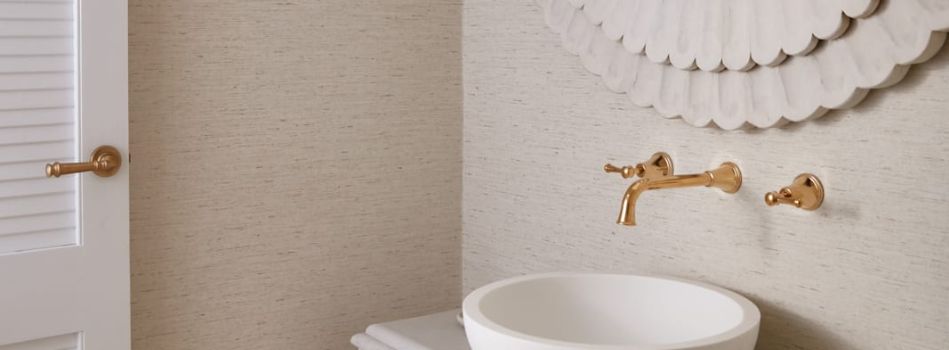Vu Collection Wall Vinyl Installation

Installation Guide
Installation instructions for our VU Collection wall vinyl.
IMPORTANT – If at any time before or during installation you do not understand these instructions, or if a discrepancy is discovered in pattern, colour, or quality, STOP. Contact Materialised Pty Ltd before proceeding. Any deviation from these instructions will void the manufacturer’s warranty.
Carefully examine all material to ensure correct pattern, colour, and quantity. Wall coverings must be installed only under permanent lighting conditions. Temperature in the area to receive wall covering must be maintained between 15°-27° C and relative humidity at 50% or less, for at least six days prior to and after installation.
Note on micro vented wall covering: Before installing micro vented wall covering, you should consult an experienced design professional with expertise in building design and in the conditions in the locale where the wall covering is to be installed for information regarding permeability requirements.
Surface Preparation
1) All surfaces to receive wall covering must be smooth, clean, dry, and structurally sound. Newly plastered walls must not have excessive quantities of lime or alkali. Walls must not contain more than 5-7% residual moisture content. A moisture meter should be used to determine moisture content.
2) All new walls receiving non micro vented wall covering should be primed to promote adhesion.
a. NOTE: Many primers are intended for use as a vapor barrier. Use of these primers on micro vented wall covering may significantly reduce the overall permeability of the installation. Use only a breathable primer for micro vented wall covering. Oil based primers create a non-porous surface, which along with wall covering tend to trap moisture, prolong drying and result in adhesion problems.
3) Existing walls present varied conditions. To ensure the soundness of an existing wall surface, we recommend the following:
a. Glossy surfaces should be sanded, and irregularities repaired. NOTE: Sanding using a medium to rough grit sandpaper is recommended on walls receiving micro vented wall covering to open pores in the existing finishes and enhance permeability.
b. Cut a shallow “x” in the painted surface with a razor blade. Wrap a strip of masking tape around your finger (sticky side out), and press it to the “x”, checking to see whether the paint film separates from the wall surface. If the paint film separates, the wall is not sound.
c. Take a wet sponge, hold it against the painted surface for 15-20 seconds, checking for any pigment or colour transfer from the wall surface to the sponge. If the pigment or colour transfers, the wall is not sound.
d. If the painted surface is found to be “unsound” by either of the above tests, the paint must be removed.
4) Remove old wall covering completely.
DO NOT DOUBLE HANG. After wall covering is removed, remove remaining adhesive with a good quality adhesive remover, then rinse the wall and allow to dry. See Step 1. If the old wall covering is peelable, remove both the top and bottom layer of wall covering.
5) Surfaces other than drywall or plaster may require special procedures and application techniques. Contact your distributor or manufacturer for recommendations prior to starting.
Application
1) All rolls are numbered consecutively. Rolls must be cut and installed in sequence, starting with the highest numbered roll. All strips should be numbered and hung in sequence as they are cut from the roll.
2) When hanging non-matched textured patterns, reverse hang alternate strips. After 3 strips are hung, carefully inspect the wall covering. If the pattern effect is not acceptable, re-hang strip No. 2 without reversing. Approval should be obtained at this point before proceeding. If there is variation in colour and/or pattern effect, discontinue hanging and contact your distributor immediately.
THE MANUFACTURER WILL NOT BE RESPONSIBLE FOR CLAIMS BEYOND THREE (3) STRIPS.
3) Seams on non-matched patterns may be table trimmed, or overlapped and double cut during installation, exercising care not to cut too deeply into the wall substrate. Geometric and matched designs may require table trimming for match perfection.
4) Apply a premium grade, full strength, heavy duty clear, strippable, mildew resistant adhesive to the back of the wall covering using a pasting machine or directly to the wall using a paint roller. Adhesive should be maintained at temperatures between 18°- 26° C prior to use. Follow the adhesive manufacturer’s instructions on coverage and set time. NOTE: For best results, micro vented wall covering should be DRY HUNG by applying the adhesive to the wall surface.
5) Install each sheet on the wall using a stiff, short bristle brush or flexible broad knife. Apply material in sequence above doors and above and below windows as it comes from the roll – DO NOT SKIP. Vertical joints should not occur less than 15cm from inside or outside corners. A heat gun may be used to allow the material to conform to irregular corners.
6) Remove excess adhesive and dirt from wall covering surface, seams, and surrounding surfaces immediately, using a sponge or damp cloth frequently rinsed in clean, warm water. A paste release chemical designed to break the static electricity generated may be added to the water. Dry with a soft, lint-free cloth. Do not use an excessive amount of water to remove adhesive from seams, as it may seep into the seam and dilute the adhesive. As dried adhesive is difficult, and in some cases impossible to remove, immediate removal is imperative. Clean all seams to avoid paste staining.